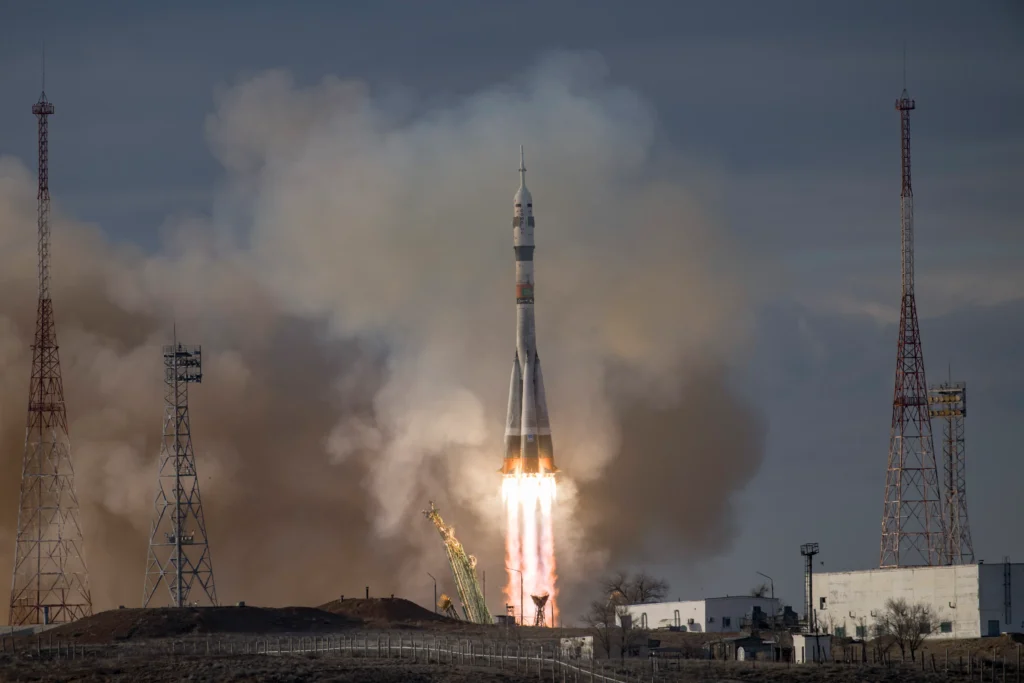Daily News
NASA Astronaut Tracy C. Dyson and Crew Successfully Launch to the International Space Station
NASA Astronaut Tracy C. Dyson and crew successfully launch to the International Space Station, marking another milestone in space exploration.

NASA/Bill Ingalls
Excitement filled the air as three crew members, including renowned NASA astronaut Tracy C. Dyson, successfully launched from the Baikonur Cosmodrome in Kazakhstan to the International Space Station (ISS). This milestone event marks the beginning of their incredible journey on the Soyuz MS-25 spacecraft. Dyson, accompanied by Roscosmos cosmonaut Oleg Novitskiy and spaceflight participant Marina Vasilevskaya, will dock at the ISS’s Prichal module on March 25. This significant mission highlights international collaboration and further advances our exploration of space.
After a flawless launch at 8:36 a.m. EDT on Saturday, the crew members embarked on their space voyage. Dyson, Novitskiy, and Vasilevskaya will join the existing crew of NASA astronauts Loral O’Hara, Matthew Dominick, Mike Barratt, Jeanette Epps, as well as Roscosmos cosmonauts Oleg Kononenko, Nikolai Chub, and Alexander Grebenkin aboard the ISS. Docking coverage is scheduled to begin at 10:15 a.m., while the crew welcome ceremony will be broadcasted on NASA+ at 1:15 p.m. Upon opening the hatches between the station and the Soyuz spacecraft around 1:40 p.m., the new crew members will officially become part of the ISS team.
Novitskiy and Vasilevskaya will spend 12 days on board the ISS before aiding O’Hara’s return to Earth on April 6, aboard the Soyuz MS-24 spacecraft. Meanwhile, Dyson will serve as an Expedition 70 and 71 flight engineer, staying aboard the station for an awe-inspiring six-month period. Her return to Earth in September will be alongside Roscosmos cosmonauts Oleg Kononenko and Nikolai Chub, completing their remarkable year-long mission on the laboratory. Notably, this marks Dyson’s third spaceflight, Novitskiy’s fourth, and Vasilevskaya’s first, symbolizing their dedication to advancing humankind’s understanding of space exploration and scientific research.
The successful launch and upcoming docking of NASA astronaut Tracy C. Dyson, Roscosmos cosmonaut Oleg Novitskiy, and spaceflight participant Marina Vasilevskaya to the International Space Station represent a monumental achievement in space exploration. Their mission contributes to ongoing research and international collaboration aboard the ISS, ultimately pushing the boundaries of human knowledge and paving the way for future space exploration endeavors.
Learn more about the space station and its activities at: https://www.nasa.gov/station
https://stmdailynews.com/category/science/
About the International Space Station:
The International Space Station (ISS) is a large space station assembled and maintained in low Earth orbit by a collaboration of five space agencies: NASA (United States), Roscosmos (Russia), JAXA (Japan), ESA (Europe), CSA (Canada), and their contractors. ISS is the largest space station ever built. Its primary purpose is performing microgravity and space environment experiments.
Operationally the station is divided into two sections: the Russian Orbital Segment assembled by Roscosmos and the US Orbital Segment assembled by NASA, JAXA, ESA and CSA. A striking feature of the ISS is the Integrated Truss Structure, which connects the large solar panels and radiators to the pressurized modules. The pressurized modules are specialized for research, habitation, storage, spacecraft control and airlock functions. Visiting spacecraft dock to the station via its eight docking and berthing ports. The ISS maintains an orbit with an average altitude of 400 kilometres (250 mi)[12] and circles the Earth in roughly 93 minutes, completing 15.5 orbits per day.[13]
The ISS programme combines two prior plans to construct crewed Earth-orbiting stations: Space Station Freedom planned by the United States, and the Mir-2 station planned by the Soviet Union. The first ISS module was launched in 1998. Major modules have been launched by Proton and Soyuz rockets and by the Space Shuttle launch system. The first long-term residents, Expedition 1, arrived on 2 November 2000. Since then the station has been continuously occupied for 23 years and 142 days, the longest continuous human presence in space. As of March 2024, 279 individuals from 22 countries have visited the space station.[14] The ISS is expected to have additional modules (the Axiom Orbital Segment, for example) before being de-orbited by a dedicated NASA spacecraft in January 2031.